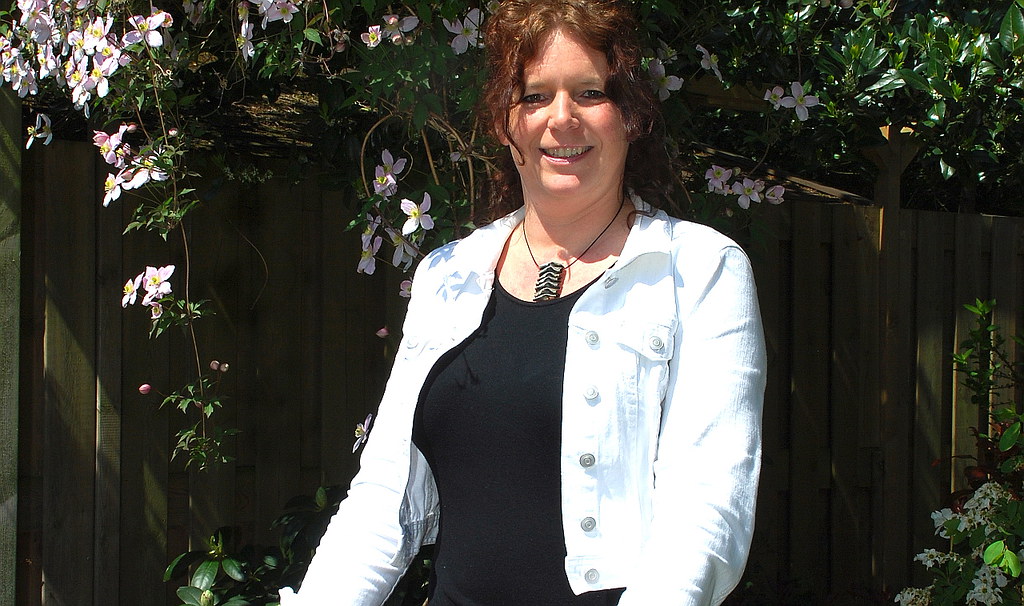Do you experience a deep sense of dread at the mere thought of exposing your bellybutton? Does the idea of someone else touching it send shivers down your spine? If so, you’re not alone. Bellybutton phobia, also known as omphalophobia, is a real and often debilitating fear for many people. But fear not, there are effective counseling strategies that can help you overcome this fear and live a more comfortable life. In this blog post, we’ll explore some of these strategies and how they can help you cope with bellybutton phobia.

Understanding Bellybutton Phobia: Causes and Symptoms
Bellybutton phobia, also known as omphalophobia, is a type of specific phobia that involves an intense and irrational fear of bellybuttons. This fear can be triggered by various stimuli, such as seeing or touching a bellybutton, or even just thinking about it. The exact causes of bellybutton phobia are not fully understood, but it is believed to be related to past traumatic experiences or learned behaviors.
Symptoms of bellybutton phobia can vary from person to person, but may include anxiety, panic attacks, avoidance behaviors, and physical symptoms such as sweating or trembling. The fear can also interfere with daily activities and relationships.
If you are experiencing symptoms of bellybutton phobia, it is important to seek professional help. A mental health professional can help you understand the root causes of your fear and develop effective coping strategies to manage it.

How to Overcome Bellybutton Phobia: Counseling Strategies
Bellybutton phobia can be debilitating and distressing for those who experience it. However, counseling strategies can help individuals overcome this fear and lead a more fulfilling life. One effective approach is cognitive-behavioral therapy (CBT), which focuses on identifying negative thoughts and behaviors related to the fear of bellybuttons, challenging them, and replacing them with positive ones.
Another helpful strategy is gradual exposure therapy, where individuals are gradually exposed to the feared object in a safe environment until their anxiety levels decrease. This involves creating a hierarchy of situations involving bellybuttons from least frightening to most frightening and practicing exposure at each level until they feel comfortable moving on to the next one.
In addition, mindfulness techniques such as deep breathing exercises or meditation can also be beneficial in managing symptoms of anxiety associated with bellybutton phobia. It’s important to seek professional guidance when attempting these strategies for best results.

Cognitive Behavioral Therapy for Bellybutton Phobia
Cognitive Behavioral Therapy (CBT) is an effective counseling strategy in treating bellybutton phobia. This therapy involves identifying and changing negative thought patterns and beliefs related to the fear of bellybuttons. Through CBT, individuals learn coping skills to manage their symptoms when faced with triggers. The therapist may use techniques such as exposure therapy, relaxation techniques, and cognitive restructuring to help the client overcome their phobia.
One technique used in CBT for bellybutton phobia is thought stopping. This involves interrupting negative thoughts by mentally saying “stop” or visualizing a stop sign whenever they occur. Another technique is systematic desensitization, which gradually exposes the individual to their fear while teaching them relaxation techniques to reduce anxiety.
Overall, CBT can be highly effective in treating bellybutton phobia by helping individuals identify and change negative thought patterns while providing tools for managing anxiety symptoms during exposure-based treatment.
Exposure Therapy for Bellybutton Phobia: Step-by-Step Guide
Gradual Exposure: Starting Small and Building Up
Exposure therapy involves gradually exposing the individual to their fear of bellybuttons in a safe and controlled environment. This helps them confront their fears and desensitize themselves to it over time. Gradual exposure is key, starting small with pictures or visualizations, then moving on to touching non-threatening objects like cotton balls, before finally being exposed to actual bellybuttons. It’s important for the therapist to work closely with the individual and monitor their progress throughout each step of the process. With repeated exposures and positive reinforcement, individuals can learn to manage their phobia towards bellybuttons and regain control over their lives.
Systematic Desensitization: Replacing Fear with Relaxation
Systematic desensitization is a type of exposure therapy that aims to replace fear with relaxation. It involves gradually exposing the individual with bellybutton phobia to stimuli related to bellybuttons, starting from the least anxiety-provoking one and progressing towards more challenging ones. This technique helps the person develop coping mechanisms and reduces their sensitivity to triggers associated with bellybuttons. During each step of this process, individuals learn how to relax through techniques such as deep breathing or meditation while confronting their fears head-on. Over time, they will gain confidence in managing their anxiety around bellybuttons and eventually overcome their phobia altogether.
Virtual Reality Therapy: Facing Fears in a Safe Environment
Exposure therapy is a proven method for overcoming phobias, including bellybutton phobia. Virtual reality therapy (VRT) is a form of exposure therapy that uses computer-generated simulations to create realistic environments where patients can confront their fears in a safe and controlled setting. VRT has been shown to be effective in treating various anxiety disorders, including phobias. During VRT sessions, patients wear a headset that immerses them in a virtual environment where they can gradually expose themselves to bellybuttons without feeling overwhelmed or anxious. This approach allows patients to develop coping skills and build confidence in managing their phobia outside of therapy sessions.
Cognitive Behavioral Therapy: Changing Negative Thoughts and Beliefs
Exposure therapy is an effective treatment for bellybutton phobia, but it can be challenging for some individuals. Cognitive behavioral therapy (CBT) can help prepare individuals for exposure therapy by changing negative thoughts and beliefs about bellybuttons. During CBT sessions, therapists work with individuals to identify and challenge negative thoughts and beliefs related to bellybuttons. This process helps individuals develop more positive and realistic beliefs about bellybuttons, which can make exposure therapy more manageable. Key phrases: cognitive behavioral therapy, negative thoughts and beliefs.

Mindfulness Techniques for Coping with Bellybutton Phobia
Breathing Exercises for Bellybutton Phobia
Mindfulness techniques such as deep breathing exercises can be helpful in managing bellybutton phobia. When you feel anxious or overwhelmed, take a few deep breaths and focus on the sensation of air moving in and out of your body. You can also try progressive muscle relaxation, where you tense and then relax each muscle group in your body. This can help release tension and reduce anxiety related to bellybutton phobia. Remember to practice these techniques regularly, even when you are not feeling anxious, to build resilience and coping skills over time.
Mindful Visualization for Bellybutton Phobia
One effective mindfulness technique for coping with bellybutton phobia is mindful visualization. This involves imagining yourself in a relaxed and comfortable environment, free from any anxiety or fear related to bellybuttons. Take deep breaths and focus on the present moment, allowing your mind to drift away from negative thoughts. Picture yourself touching your own bellybutton in a safe and controlled environment, gradually desensitizing yourself to the phobia. Visualize positive outcomes and affirmations about overcoming your fears, such as “I am in control of my thoughts and feelings.” Practicing this technique regularly can help reduce anxiety associated with bellybutton phobia, promoting inner peace and calmness.
Progressive Muscle Relaxation for Bellybutton Phobia
Progressive Muscle Relaxation is a mindfulness technique that can help individuals cope with bellybutton phobia. It involves tensing and then relaxing different muscle groups in the body, focusing on sensations of tension and release to promote relaxation. This technique may be particularly helpful for those who experience physical symptoms such as muscle tension or trembling during exposure to their fear trigger. By regularly practicing this exercise, individuals can learn to recognize signs of anxiety and use relaxation techniques to manage their response. With consistent practice, progressive muscle relaxation can become an effective tool for managing anxiety related to bellybutton phobia.

Family and Group Therapy for Bellybutton Phobia: Benefits and Challenges
Family and group therapy can be an effective way to address bellybutton phobia, especially if the fear is rooted in childhood experiences or family dynamics. In a safe and supportive environment, individuals can explore their feelings and thoughts about bellybuttons with the help of a therapist and other group members.
One of the benefits of family therapy is that it allows for a deeper understanding of how family dynamics may contribute to the development of bellybutton phobia. For example, if a parent had a strong aversion to bellybuttons, this may have been passed down to their child. Family therapy can help break this cycle by addressing underlying issues and improving communication within the family.
Group therapy, on the other hand, provides individuals with an opportunity to connect with others who share similar experiences. This can be comforting and validating, as well as provide a sense of community and support. Group therapy also allows for exposure to bellybuttons in a controlled setting, which can help desensitize individuals to their fear.
However, it’s important to note that family and group therapy may not be suitable for everyone. Some individuals may feel uncomfortable sharing their experiences with others or may not have access to these types of therapy. It’s important to work with a qualified therapist who can tailor treatment to meet individual needs and preferences.

Self-Help Tips for Managing Bellybutton Phobia in Daily Life
Managing bellybutton phobia can be challenging, but there are ways that you can cope with it in your daily life. Self-help tips can provide immediate relief and empower you to take control of the situation. First, it is essential to recognize that avoidance only reinforces the fear. Gradually exposing yourself to situations that trigger anxiety can help reduce fear levels over time. Consider carrying a small object that you find comforting or soothing as a tool for grounding during stressful moments.
Breathing exercises and mindfulness techniques such as meditation or yoga can help regulate your emotions and manage physical symptoms like rapid heart rate or sweating. Additionally, practicing positive affirmations or cognitive restructuring can help shift negative thought patterns into more positive ones.
It may also be helpful to seek support from family and friends who understand your condition and offer encouragement without judgment or criticism. Remember, recovery is not an overnight process; patience and persistence are crucial on this journey towards healing.
In conclusion, bellybutton phobia can be a challenging condition to cope with, but with the right counseling strategies and techniques, it is possible to overcome it. Understanding the causes and symptoms of bellybutton phobia is the first step towards effective treatment. Cognitive behavioral therapy and exposure therapy are two of the most effective counseling strategies for managing this phobia. Mindfulness techniques and self-help tips can also be helpful in managing symptoms on a daily basis. Family and group therapy can provide additional support and help individuals feel less isolated in their struggles. With the right support and guidance, individuals with bellybutton phobia can learn to manage their symptoms and lead fulfilling lives.
FAQ
Who can develop bellybutton phobia?
Anyone, but it’s more common in women.
What are the symptoms of bellybutton phobia?
Fear, anxiety, and avoidance of bellybuttons.
How is bellybutton phobia treated?
Therapy, medication, and exposure therapy.
Who can diagnose bellybutton phobia?
A mental health professional.
What causes bellybutton phobia?
Trauma, genetics, or learned behavior.
How long does bellybutton phobia treatment take?
It varies, but typically several months.
